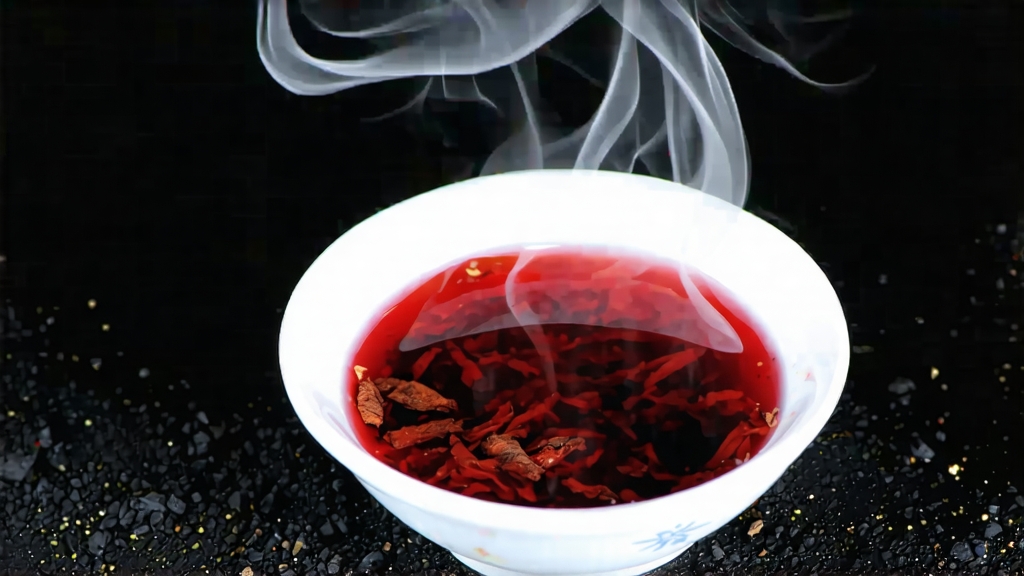
If every tea tells a story, Lapsang Souchong whispers of military roads, Dutch galleons, and mist-wrapped cliffs where pine resin perfumes the air. Hailing from Tongmu Village, a protected enclave deep in China’s Wuyi Mountains of northern Fujian, this is the black tea that astonished Europe in 1604 and still divides opinion today: either a love-at-first-sip smokiness or an assertive campfire in a cup. Yet beneath the drama lies a refined, centuries-old craft that created the very category we now call “black tea.”
1. Historical Footprints
Local legend credits the birth of Lapsang Souchong to an accidental wartime delay. Qing-era soldiers, so the tale goes, commandeered a tea factory during the late Ming; fresh leaves were left to wither far longer than intended. To save the harvest, quick-thinking workers dried the leaves over burning pine boughs, inadvertently inventing both oxidation and smoking. Whether myth or marketing, what is documented is that by 1604 Dutch traders had shipped this “bohea” (the European corruption of “Wuyi”) to The Hague, where its amber liquor and long shelf life ignited a continental craze. England’s East India Company followed, and by the late 1600s Lapsang Souchong was pouring from silver pots in London coffee-houses, sweetened with newly fashionable sugar. In essence, every modern breakfast blend—from Earl Grey to Russian Caravan—owes its existence to this rugged Fujian original.
2. Terroir and Leaf Grade
Tongmu sits at 27° N latitude, hemmed by 1,500-metre granite peaks that trap cool, moist air. The micro-climate shrouds tea gardens in fog until late morning, slowing photosynthesis and concentrating amino acids. Only two cultivars are legally permitted within the core zone: Xiaozhong (small-leaf) and Cai Cha (mixed colour). The highest grade, simply called “Zheng Shan Xiao Zhong,” is picked in late April, taking only the central two leaves and a bud. Leaves from neighbouring counties may be smoke-dried, but cannot bear the coveted “Zheng Shan” (Original Mountain) designation. Thus, international buyers encounter a spectrum: from subtle, honeyed, almost smoke-free imperial lots to assertive export grades redolent of tar and pine.
3. Crafting the Smoke: A Living Timeline
Although machines have encroached on many stages, Tongmu’s core process remains defiantly manual and wood-fired.
- Withering: Fresh leaves are laid on bamboo screens set over river-rock channels. Pine logs smoulder below, raising the ambient temperature to 30 °C while resinous smoke drifts upward. This dual wither-and-smoke phase lasts 8–10 hours, far longer than the 2-hour hot-air wither of conventional black tea.
- Rolling: Once the leaves turn velvety and lose 60 % moisture, they are rolled under palm pressure to rupture cell walls, releasing catechins that will oxidise into theaflavins and thearubigins.
- Oxidation: Rolled leaves rest in deep bamboo crates lined with wet cloth. Oxidation proceeds slowly at 24 °C and 85 % humidity, requiring 4–5 hours instead of the 90 minutes typical for Ceylon teas. The extended enzymatic activity softens tannic edges and builds malty sweetness.
- Firing / Smoking: Here lies the signature. Workers shovel the oxidised leaf into iron pans set over a pinewood pit. Fresh pine braches are tossed on, flames are immediately damped with wet sacks, and the leaves are tossed constantly for three minutes. This “first smoke” fixes colour and aroma. After cooling, a gentler “second smoke” follows: leaves rest on upper bamboo racks while low-temperature pine smoke circulates for 6–8 hours. Master smokers judge readiness by sound—when a handful rustles like autumn leaves—and by scent: resinous yet not acrid.
- Sorting & Aging: Final sorting removes stems and yellow leaves. Premium lots are then rested 30–45 days in cedar-lined cabinets; the brief aging allows smoke volatiles to marry with natural tea aromatics, yielding a rounder cup.
4. Variations within the Smoke
Pur